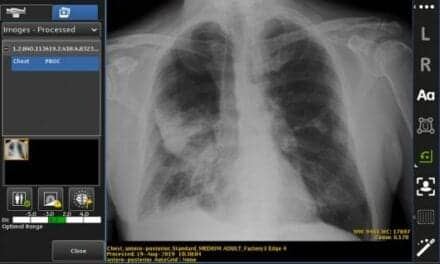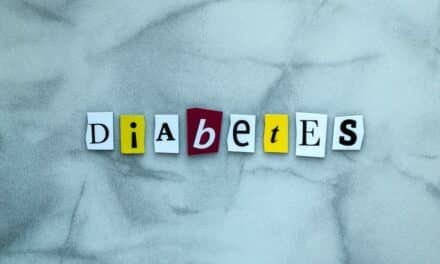The U.S. FDA has authorized the marketing of software to assist medical professionals in the acquisition of cardiac ultrasound, or echocardiography, images. The software, called Caption Guidance, is an accessory to compatible diagnostic ultrasound systems and uses artificial intelligence to help the user capture images of a patient’s heart that are of acceptable diagnostic quality.
The Caption Guidance software is indicated for use in ultrasound examination of the heart, known as two-dimensional transthoracic echocardiography (2D-TTE), for adult patients, specifically in the acquisition of standard views of the heart from different angles. These views are typically used in the diagnosis of various cardiac conditions.
“Echocardiograms are one of the most widely-used diagnostic tools in the diagnosis and treatment of heart disease,” says Robert Ochs, PhD, deputy director of the Office of In Vitro Diagnostics and Radiological Health in the FDA’s Center for Devices and Radiological Health. “Today’s marketing authorization enables medical professionals who may not be experts in ultrasonography, such as a registered nurse in a family care clinic or others, to use this tool. This is especially important because it demonstrates the potential for artificial intelligence and machine learning technologies to increase access to safe and effective cardiac diagnostics that can be life-saving for patients.”
Cardiac diagnostic tests are necessary to identify heart conditions. Among them are electrocardiograms (more widely known as an EKG or ECG), Holter monitors, and cardiac ultrasound examinations. The software authorized today is the first software authorized to guide users through cardiac ultrasound image acquisition. The Caption Guidance software was developed using machine learning to train the software to differentiate between acceptable and unacceptable image quality.
This knowledge formed the basis of an interactive AI user interface that provides prescriptive guidance to users on how to maneuver the ultrasound probe to acquire standard echocardiographic images and video clips of diagnostic quality. The AI interface provides real-time feedback on potential image quality, can auto-capture video clips, and automatically saves the best video clip acquired from a particular view. Importantly, the cardiologist still reviews the images for a final assessment of the images and videos for patient evaluation.
The Caption Guidance software currently can be used with a specific FDA-cleared diagnostic ultrasound system produced by Teratech Corp., with the potential to be used with other ultrasound imaging systems that have technical specifications consistent with the range of ultrasound systems used as part of the development and testing.
In its review of this device application, the FDA evaluated data from two independent studies. In one study, 50 trained sonographers scanned patients, with and without the assistance of the Caption Guidance software. The sonographers were able to capture comparable diagnostic quality images in both settings. The other study involved training eight registered nurses who are not experts in sonography to use the Caption Guidance software and asking them to capture standard echocardiography images, followed by five cardiologists assessing the quality of the images acquired. The results showed that the Caption Guidance software enabled the registered nurses to acquire echocardiography images and videos of diagnostic quality.
The FDA reviewed the device through the De Novo premarket review pathway, a regulatory pathway for low- to moderate-risk devices of a new type. Along with this authorization, the FDA is establishing special controls for devices of this type, including requirements related to labeling and performance testing. When met, the special controls, along with general controls, provide reasonable assurance of safety and effectiveness for devices of this type. This action creates a new regulatory classification, which means that subsequent devices of the same type with the same intended use may go through FDA’s 510(k) premarket process, whereby devices can obtain marketing authorization by demonstrating substantial equivalence to a predicate device.






